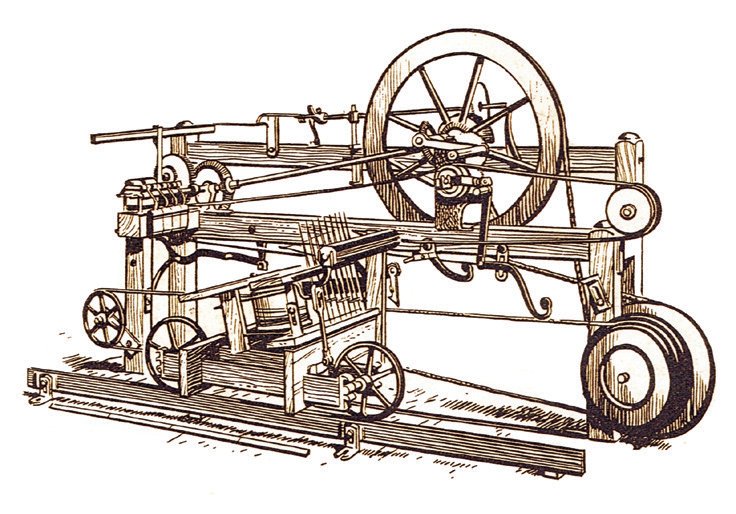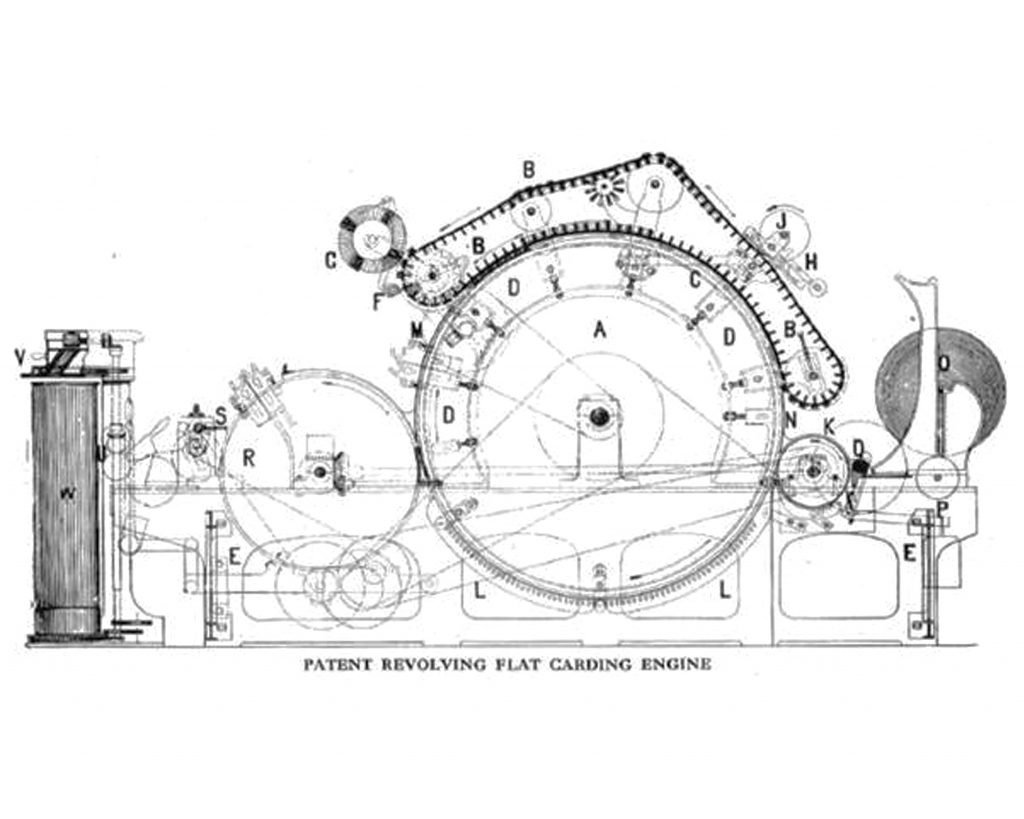The textile industry was one of the most affected sectors by the Industrial Revolution of the 17th century, which radically changed production by improving quality standards. The innovations in the spinning process gradually led to its mechanization, therefore increasing productivity.


In fact, in 1764-70 James Hargreaves patented his automatic spinner called “spinning jenny”, and in 1769, Richard Arkwright patented a more revolutionary machine, which was firstly driven by the force of water (water frame) and then by steam and it was destined to employment in factories.
During this technological revolution, in 1779 Samuel Crompton invented the “mule-jenny”, an automatic spinning wheel that was driven by water and ensured a highly resistant and quality product.
The year 1785 was a turning point since the new steam machine invented by Matthew Boulton and James Watt was introduced in factories. Steam replaced water as driving force, enabling to establish the textile production in places that were not close to waterways. Due to the mechanization and the new organization of factories, at the end of the century a single spinner was able to produce in the same time what 200 spinners used to previously produce.
HISTORY OF THE TEXTILE TRADITION IN PRATO
13th century
The surrounding area of Prato is crossed by the Bisenzio river, which fostered the installation of a vast system of mills in the Middle Age. Here, along the canals of the river, the medieval textile industry developed. It was actually Francesco Marco Datini (1335-1410), who gave a significant commercial impulse to the textile industry of the city, allowing fabrics to be commercialized throughout Europe and ensuring a period of prosperity and stability. The presence within the territory of more than 100 water mills and a favourable commercial context led to the industrial development of the city in the 19th century.
19th century
At the time of the English Industrial Revolution, the researcher and mechanical technician Giovan Battista Mazzoni improved the spinning machines and designed new ones that were destined to the carding process. Thanks to his work, between 1850-60 a new method of regenerating cutouts of fabrics was already in use. These materials were carefully selected and mechanically converted into the so-called regenerated wool that enabled to produce any kind of carded fabric at very competitive prices, also blended with virgin wool.
20th century
Despite the difficulties of the fascist and war period, starting from the 1960s there was a significant development of machines and technologies. Production increasingly aimed at high quality products, which were made of precious fibers (virgin wool, cashmere, silk, cotton, viscose, microfibers etc.).
Prato has become an international leader in the knitwear industry: for many years, the fabrics from Prato have been chosen by the major “Made in Italy” designers.
THE CRISIS OF TEXTILE
However, the 1980s’ represented difficult period for the textile industry of Prato, resulting in a decrease of the number of workers and companies by 25% and 35% respectively. The heating system in private homes, the mass motorization and the spread of new lifestyles determined a gradual lightening of the average weight of fabrics and clothes and the increase of cotton, silk and polyester fabrics at the detriment of wool, which represented a significant share of the total offer. This new lifestyle posed a significant threat for the textile industry of Prato, which was forced to change its traditional organization.
(source: Comune di Prato)
RECOVERY
Prompted by the new challenges of markets, the entrepreneurs from Prato revolutionized their offer by searching for more dynamic markets. The local offer is now made of 40% of articles in worsted wool, cotton, viscose, linen and silk. The new productive mix has broadened the horizons of the industry and most of the mills have now relationships with contractors outside Prato and they tend to buy yarns and fabrics from them. The organizational structure partly possesses new elements and many mills currently tend to carry out functions that used to be assigned to external companies. As a result, Prato has lost in terms of companies, professionalism and productive experience but it has managed to reverse the crisis and regain confidence in its own resources.
(source: pratoartestoria.it)
